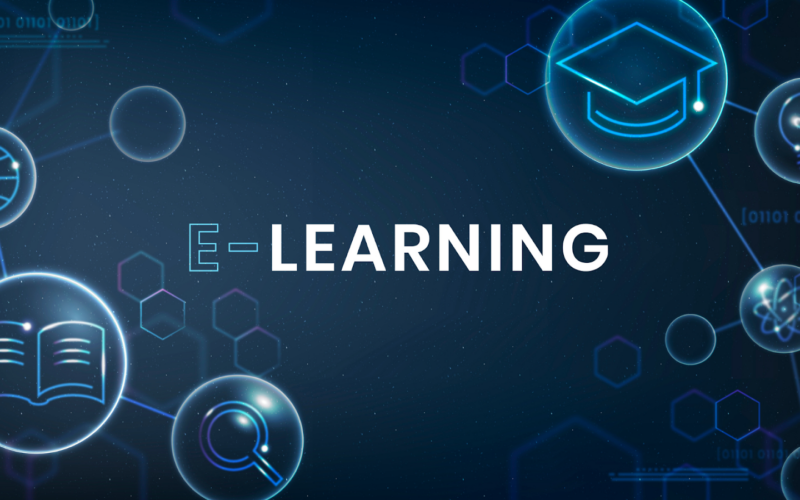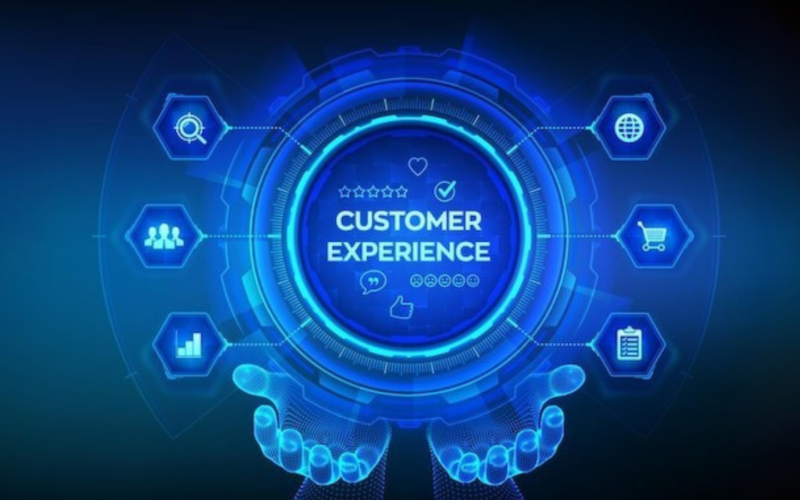AI is transforming the way we approach learning, and it’s not just in classrooms. Google is backing a partnership with UNSW Sydney to roll out free, hands-on AI literacy programs for school students and teachers across Australia.
But many businesses struggle with scaling training effectively and ensuring every learner receives the attention they deserve.
In this article, you’ll learn how AI in eLearning can address these challenges, enhance employee engagement, and make your training processes more efficient and impactful.
Key Takeaways
- AI in eLearning: AI personalises training by adapting to individual learning styles, improving engagement, and boosting knowledge retention for employees.
- Key Applications: AI-driven solutions like adaptive learning, assessments, intelligent tutoring, and simulations enhance training effectiveness and employee performance.
- Risks: Challenges include employee resistance, data privacy concerns, system integration issues, and maintaining compliance with regulations.
- Codewave: Codewave offers tailored AI in eLearning solutions to help businesses implement efficient, scalable, and impactful training programmes that drive measurable results.
Understanding AI in eLearning
AI in eLearning is about using technology to make learning smarter, faster, and more personalised. It means leveraging AI to understand learners’ needs and adjust the content, pace, and support based on their progress.
Right now, Australia is adopting digital learning at a rapid pace, especially with the push from the government and the education sector to get more people comfortable with AI in education.
Here’s where it gets tricky though:
- Regional connectivity gaps – Not everyone has access to the high-speed internet needed for seamless digital learning.
- Diverse student needs – With a broad range of learning styles, businesses must cater to everyone, from tech-savvy employees to those less familiar with digital tools.
- Compliance requirements – Australian businesses need to ensure their training programs meet local standards and regulations.
As we explore AI’s role in eLearning, it’s important to distinguish between how AI is applied in administration versus teaching and learning. These two areas might seem similar, but they serve different purposes in the overall learning process.
Here’s a closer look at how each functions:
| AI for Administration | AI for Teaching/Learning |
| Automates scheduling, assessments, and tracking to reduce administrative burden. | Personalises learning paths based on employee performance, ensuring relevant content delivery. |
| Simplifies data management and reporting for compliance and performance reviews. | Provides real-time feedback to employees, guiding them through learning challenges. |
| Manages enrolments and course allocation with minimal manual intervention. | Creates interactive learning experiences, such as simulations, to engage employees actively. |
| Ensures training programs meet regulatory requirements and company standards. | Tailors content delivery to different learning styles, increasing retention and application. |
| Optimises resource allocation, ensuring efficient training delivery. | Enhances employee engagement and knowledge retention through adaptive learning. |
Looking to advance your AI/ML capabilities? Explore Codewave’s AI/ML development services to create smarter, data-driven solutions that drive business growth. Start building your AI-driven future today!
With that distinction in mind, let’s look into the key applications that are driving real impact in eLearning today.
Key Applications of AI in eLearning
Managing a diverse team with varying learning needs can be challenging. Some employees excel, while others struggle to keep up. AI in eLearning can help by personalising content, automating assessments, and providing real-time feedback, ensuring every employee gets the support they need.
Let’s explore the key applications of AI in eLearning and how you can implement them to improve training outcomes.
1. Adaptive Learning Platforms
Adaptive learning platforms use AI to personalise the learning experience. They adjust the content and pace based on how well employees are progressing. In eLearning, they help scale personalised training, allowing each employee to learn at their own pace.
How to Implement
- Choose the Right Platform: Select an adaptive learning platform that integrates well with your existing Learning Management System (LMS).
Examples include Smart Sparrow and Knewton, which allow businesses to personalise content based on user performance.
- Data Collection: Set up a system to gather data on employee performance, progress, and learning behaviours. This data is crucial for the platform to adjust content.
- Customise Learning Paths: Based on the gathered data, create customised learning paths for each employee. The platform will adjust the difficulty and content based on how they perform.
- Monitor and Update: Continuously monitor the system’s feedback and adjust learning paths where necessary. Use insights to further personalise training.
Actionable Tips
- Ensure high-quality data collection, as adaptive learning platforms depend on this to personalise content accurately.
- Train your team to understand how adaptive learning works so they can maximise its potential.
- Regularly assess the platform’s performance and gather feedback from employees to refine the learning paths.
- Ensure a smooth integration with your current training programmes to avoid disrupting your existing processes.
2. AI-Driven Assessment
AI-driven assessment tools automate grading, feedback, and performance tracking, allowing businesses to streamline evaluation processes. In eLearning, they enable faster and more consistent assessments while providing valuable insights into employee performance.
How to Implement
- Select an AI Assessment Tool: Choose a platform like GradeScope or Socrative, which offers automated grading, real-time feedback, and analytics. Ensure the platform integrates with your existing LMS for a smooth setup.
- Design Custom Assessments: Tailor assessments to fit your specific training objectives, ensuring they reflect the skills and knowledge you want to measure. AI tools can grade everything from multiple-choice questions to open-ended responses.
- Set Up Feedback Loops: Create automated feedback mechanisms so employees can receive instant results. Use AI to provide detailed insights on areas of improvement and suggested resources for further learning.
- Monitor and Analyse Results: Regularly check the data provided by the AI system. It can help identify common weaknesses across teams and allow you to refine your training content accordingly.
Actionable Tips
- Start with small pilot programmes to test how the AI system evaluates employee performance before rolling it out company-wide.
- Use AI-driven assessments to track progress over time, rather than just for final evaluations. This helps you stay proactive in addressing learning gaps.
- Regularly update assessments to reflect changes in job roles and skills requirements, ensuring your employees are always tested on relevant content.
- Make sure feedback is clear and actionable so employees can use it to improve their skills.
3. Intelligent Tutoring Systems
Intelligent tutoring systems (ITS) use AI to provide personalised, one-on-one learning experiences. In the context of eLearning, they help businesses deliver targeted training without the need for constant instructor involvement.
How to Implement
- Choose the Right ITS Platform: Select a platform like Carnegie Learning or Squirrel AI, which offers AI-powered tutoring that adapts to individual learning styles and needs. Ensure it integrates well with your current training infrastructure.
- Define Learning Objectives: Outline specific skills or knowledge areas that the ITS should focus on. Align these objectives with your business goals to ensure the training is relevant.
- Integrate with Existing Content: Upload your training material to the ITS platform. The AI will tailor content delivery based on the employee’s interaction with the system.
- Track Performance and Adjust: Monitor the system’s effectiveness by reviewing performance data. Adjust learning paths and content as necessary to keep employees on track and engaged.
Actionable Tips
- Ensure your content is diverse and engaging, as an ITS works best when it has rich, varied material to adapt to.
- Start with specific skills or knowledge areas that employees need the most support with and scale up as needed.
- Encourage employees to interact with the system regularly to benefit from its personalised learning paths.
- Continuously review analytics to identify any issues with content delivery or learner progress, and make adjustments promptly.
4. Virtual Classrooms & Simulation
Virtual classrooms and simulations use AI to create immersive, interactive learning environments. In eLearning, they provide businesses with a way to train employees on complex tasks, from customer service to technical operations, in a more engaging and effective manner.
How to Implement
- Select a Virtual Classroom Platform: Choose a platform like VIRTUOSO or Labster, which supports AI-driven simulations and virtual environments. Ensure it can be integrated with your existing training tools.
- Create Realistic Scenarios: Develop simulations that mirror the challenges your employees face in their roles. For example, a customer service simulation could include handling difficult customer interactions in a virtual setting.
- Integrate Learning Goals: Link each virtual scenario to specific learning objectives, ensuring the simulations align with the skills and knowledge your employees need to develop.
- Monitor Progress and Provide Feedback: Use the built-in analytics to track employee performance in simulations. Offer instant feedback and suggestions for improvement to guide them through the learning process.
Actionable Tips
- Focus on creating simulations that are directly relevant to your employees’ day-to-day responsibilities for maximum impact.
- Regularly update simulations to keep them in line with evolving industry standards and business needs.
- Encourage employees to repeat simulations to refine their skills, especially for complex tasks or high-stakes scenarios.
- Use the analytics provided by virtual platforms to track improvement, identify common mistakes, and address knowledge gaps.
Curious about how AI can impact education? Explore the pros and cons to understand its potential and make informed decisions for your learning strategy.
5. AI for Accessibility
AI for accessibility in eLearning ensures that training programs are inclusive for all employees, regardless of their abilities. In business settings, AI helps create an equal learning environment, ensuring that no employee is left behind due to physical or cognitive limitations.
How to Implement
- Choose the Right Accessibility Tools: Platforms like Microsoft Accessibility Suite or Google’s AI-powered accessibility tools can provide real-time captioning, text-to-speech, and translation services to enhance learning experiences.
- Integrate with Your Existing Learning Systems: Ensure that your eLearning platform supports AI tools that can be seamlessly integrated with existing systems. This allows for an inclusive experience across all training modules.
- Test for Accessibility: Conduct regular tests to ensure your content is fully accessible. This includes checking for screen reader compatibility and providing alternatives for audio and video content.
- Provide Personalised Accessibility Features: Allow employees to customise their learning experience by offering features like adjustable text size, font types, and colour contrasts for better readability.
Actionable Tips
- Start with basic accessibility features, such as subtitles and screen readers, then gradually add more advanced tools based on your team’s needs.
- Encourage feedback from employees using accessibility features to improve their learning experience.
- Ensure that all video content is captioned and provide transcripts for audio files.
- Regularly update your accessibility tools to keep up with new developments and ensure compliance with local regulations.
While AI in eLearning brings many benefits, it’s crucial to be aware of the risks and challenges. Let’s explore those next.
Risks and Challenges of AI in eLearning
You’ve introduced AI in your training, but soon you realise it’s not all smooth sailing. Some employees find the technology daunting, while others raise concerns over data security. These are just a few of the challenges businesses face when implementing AI in eLearning.
Here are the main risks and solutions:
1. Data Privacy and Security Concerns
AI systems require large amounts of data, which can raise concerns about how employee information is being used or stored.
Fix: Ensure compliance with Australian data privacy laws (e.g., the Privacy Act 1988). Work with reputable platforms that prioritise security and transparency. Regular audits and clear data usage policies are essential.
2. Integration with Existing Systems
Integrating AI tools with your current Learning Management System (LMS) or other business platforms can be complex and costly.
Fix: Choose AI platforms that offer seamless integration options. Collaborate with vendors who can support custom integrations tailored to your existing infrastructure.
3. Lack of Personalisation in Learning
AI might not initially deliver the level of personalisation employees need, leading to disengagement or ineffective training.
Fix: Regularly analyse learning data to ensure the AI adapts appropriately to individual needs. Continuously refine content and learning paths based on performance feedback.
4. Compliance and Regulatory Challenges
AI in eLearning must meet industry-specific regulations, including those related to employee training and certification.
Fix: Work closely with legal and compliance teams to ensure AI-driven systems align with Australian standards and regulations. Automate reporting features to track compliance in real-time.
5. Over-Reliance on Automation
Relying too heavily on AI could lead to a lack of human interaction, diminishing the overall learning experience and support for employees.
Fix: Balance AI-driven learning with human oversight. Use AI for assessments and content delivery, but ensure that there are real-world opportunities for employees to engage with mentors and managers.
6. Cost of Implementation
The initial investment in AI technology and ongoing maintenance can be costly, particularly for smaller businesses.
Fix: Start with a pilot program targeting specific training needs. Measure the ROI of the initial implementation and scale gradually, focusing on the areas that provide the most value.
Ready to take your eLearning to the next level with AI? Explore Codewave’s GenAI development services to create personalised, adaptive learning experiences that drive engagement and performance. Start transforming your training programs today!
Now that you’ve selected the right AI tool, start by testing it with a small group. Track key metrics like engagement and performance, then adjust as needed. Once you’re confident, expand its use to other training areas.
Why Choose AI in eLearning for Your Business?
When your business is ready to take its training to the next level, you need more than just a standard solution. At Codewave, we go beyond basic AI in eLearning by crafting tailored, data-driven learning experiences that are efficient, engaging, and designed to meet your business needs.
Curious to see how Codewave’s AI-driven eLearning solutions can enhance your business? Explore our portfolio to discover how we’ve helped companies like yours deliver personalised, scalable, and effective training programmes.
What You Get with Codewave’s AI in eLearning Solutions:
- 60% Improvement in Engagement: Struggling with low employee engagement in training? Our AI-powered learning solutions keep employees focused, delivering faster, more impactful results.
- 3x Faster Implementation: Frustrated with lengthy onboarding for new tools? We get your AI-driven training system up and running quickly, cutting down delays and improving efficiency.
- Save Up to 3 Hours Weekly: Tired of manual training assessments and feedback? Our automation handles repetitive tasks, freeing your team to focus on high-value activities.
- 25% Lower Costs: Concerned about rising training expenses? Codewave’s AI solutions cut costs while maintaining high-quality, scalable learning experiences.
Our Services Include:
- AI in eLearning Strategy Consultation: We evaluate your current training approach and create a custom roadmap, aligning with your business goals to ensure scalable and effective employee development.
- AI Solution Design & Development: From concept to implementation, we design and deploy AI-driven eLearning tools that improve engagement, learning retention, and overall performance.
- Integration with Learning Management Systems (LMS): We seamlessly connect our AI solutions with your existing LMS, HR systems, and employee platforms for a unified learning experience.
- Interactive Dashboards & Analytics: Our intuitive dashboards turn learning data into actionable insights, helping you track employee progress and make real-time, data-driven decisions.
Curious to see how your eLearning strategy can truly improve? Book a session with Codewave’s experts and discover how we can turn your training programs into measurable, high-impact results.
FAQs
Q. How can AI in eLearning improve employee retention in training programs?
A. AI in eLearning helps personalise the learning experience, tailoring content to each employee’s pace and learning style. This personalisation leads to increased engagement and helps employees stay motivated, resulting in better retention of knowledge. When training feels relevant and manageable, employees are more likely to complete their courses and apply what they’ve learned, reducing dropout rates.
Q. Can AI in eLearning be used to track soft skills development?
A. Yes, AI in eLearning can track and assess both hard and soft skills. For example, AI can monitor communication patterns, decision-making processes, and collaboration during team-based tasks. Using this data, businesses can pinpoint areas for improvement and provide targeted training to develop essential soft skills such as leadership, teamwork, and problem-solving.
Q. How can AI in eLearning help with compliance training?
A. AI in eLearning can streamline compliance training by offering tailored modules, quizzes, and real-time assessments. It tracks progress and ensures employees meet training requirements within the designated time frame. With AI, businesses can automate reminders and generate detailed reports for compliance audits, making the process more efficient and less time-consuming.
Q. Will AI in eLearning replace human trainers?
A. AI in eLearning is designed to complement human trainers, not replace them. While AI can automate tasks like assessments and feedback, it cannot replicate the value of human interaction, especially when it comes to mentoring, coaching, and addressing complex employee questions. Human trainers can focus on higher-level tasks while AI handles routine training activities.
Q. What are the costs associated with implementing AI in eLearning?
A. The costs of implementing AI in eLearning vary depending on the platform, the size of your business, and the complexity of the training needed. While there may be initial investment costs, AI-powered platforms often reduce long-term expenses by automating tasks, improving training efficiency, and enhancing employee performance. Businesses should assess the ROI to determine the most cost-effective solution for their needs.
Codewave is a UX first design thinking & digital transformation services company, designing & engineering innovative mobile apps, cloud, & edge solutions.







